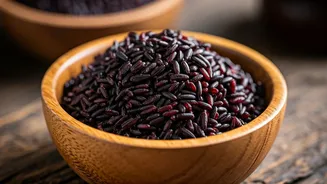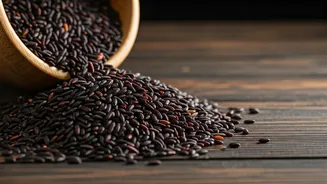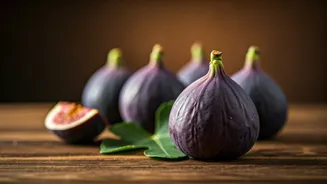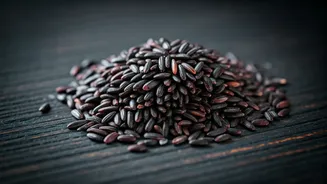Makhana's Marvels Unveiled
Makhana, also known as fox nuts or lotus seeds, is a popular snack and ingredient in Indian cuisine. They are derived from the seeds of the Euryale ferox
plant. These puffed seeds are praised for their nutritional benefits, offering a good source of fiber, which is important for digestive health. Makhana consumption can help regulate bowel movements and prevent constipation. Furthermore, makhana is relatively low in calories and carbohydrates, which makes it a suitable choice for those seeking to manage their weight. They are also known to have a low glycemic index, which implies they have a minimal impact on blood sugar levels. Makhana can be easily incorporated into various diets, either as a simple snack or added to curries, snacks, and sweets. Additionally, they are rich in antioxidants, which help fight free radicals in the body. Makhana is a great source of calcium, magnesium, iron, and phosphorus. It’s also gluten-free, which makes it suitable for individuals with gluten sensitivities.
Singhada's Nutritional Profile
Singhada, or water chestnut, is a seasonal food, primarily available during the cooler months. These crunchy, white tubers are packed with nutrients. Singhada is a good source of dietary fiber, promoting healthy digestion and preventing digestive issues. It's a good source of carbohydrates, providing sustained energy. Unlike makhana, singhada has a higher carbohydrate content but is still considered a healthy option, especially when consumed in moderation. They are also a great source of essential minerals like potassium, copper, and manganese. Singhada has a low glycemic index, similar to makhana, meaning it doesn't cause a rapid spike in blood sugar levels. This makes it a suitable choice for individuals managing their blood sugar. Singhada is also known for its cooling properties and is frequently consumed during fasting periods. These versatile water chestnuts can be eaten raw, boiled, roasted, or used in various dishes, enhancing their taste. Singhada is also packed with Vitamin B and C, which helps in boosting immunity.
Digestion and Gut Health
Both makhana and singhada are beneficial for digestion, but they have different mechanisms. Makhana, being high in fiber, aids in regulating bowel movements and preventing constipation, contributing to a healthy gut. The fiber in makhana adds bulk to the stool, making it easier to pass. Singhada also supports digestion because of its fiber content. Singhada's fiber assists in maintaining a healthy gut microbiome, which is crucial for optimal digestion and nutrient absorption. Furthermore, singhada has properties that help to soothe the digestive tract and relieve digestive discomfort. In general, both makhana and singhada are excellent food choices for digestion due to their fiber content and other beneficial properties, making them suitable additions to a gut-friendly diet.
Weight Management Aspects
For weight management, both makhana and singhada present distinct advantages. Makhana is a smart choice for those seeking to shed extra weight because it is low in calories and carbohydrates. It's a satisfying snack that can help you feel full, thus potentially reducing overall calorie intake. Singhada also is a good option for weight loss, despite having slightly more carbohydrates than makhana. Its high fiber content helps in promoting satiety, and its low-fat content is beneficial for weight management. When choosing between the two for weight loss, consider portion sizes and overall calorie intake. Makhana might be preferable for those aiming to minimize carbohydrate intake. Singhada can still be a part of a weight-loss diet when consumed in moderation and combined with other healthy foods. Consuming either makhana or singhada as a portion of a well-rounded diet can aid in successful weight loss.
Blood Sugar Control
When it comes to blood sugar management, both makhana and singhada can be beneficial due to their low glycemic index. Foods with a low glycemic index cause a slow and steady rise in blood sugar levels, which is good for people with diabetes or those looking to avoid blood sugar spikes. Makhana's low carbohydrate content makes it an excellent choice for blood sugar management. Singhada also has a low glycemic index, making it suitable for blood sugar management. The fiber in both foods plays a role in slowing down the absorption of sugars, further helping to regulate blood sugar levels. Including either makhana or singhada in a diet can provide a source of fiber that does not significantly impact blood sugar levels. Consulting a healthcare professional or a registered dietitian is recommended for personalized dietary advice tailored to individual health needs, especially for those with diabetes or other blood sugar-related concerns.
Making the Right Choice
Choosing between makhana and singhada relies on your individual needs and preferences. If you're looking for a low-calorie, low-carb snack, makhana is an excellent choice. It is also suitable for those looking to manage blood sugar levels due to its low glycemic index. If you appreciate the unique taste and texture of singhada and don't mind a slightly higher carbohydrate content, it can still be part of a healthy diet, especially when consumed in moderation. Consider your overall dietary goals, including digestive health, weight management, and blood sugar control, when making your decision. Both makhana and singhada provide a nutritious snack, so the optimal choice is the one you enjoy most and that best fits into your overall eating plan. Both options offer valuable nutritional benefits and can play a role in a balanced diet.













